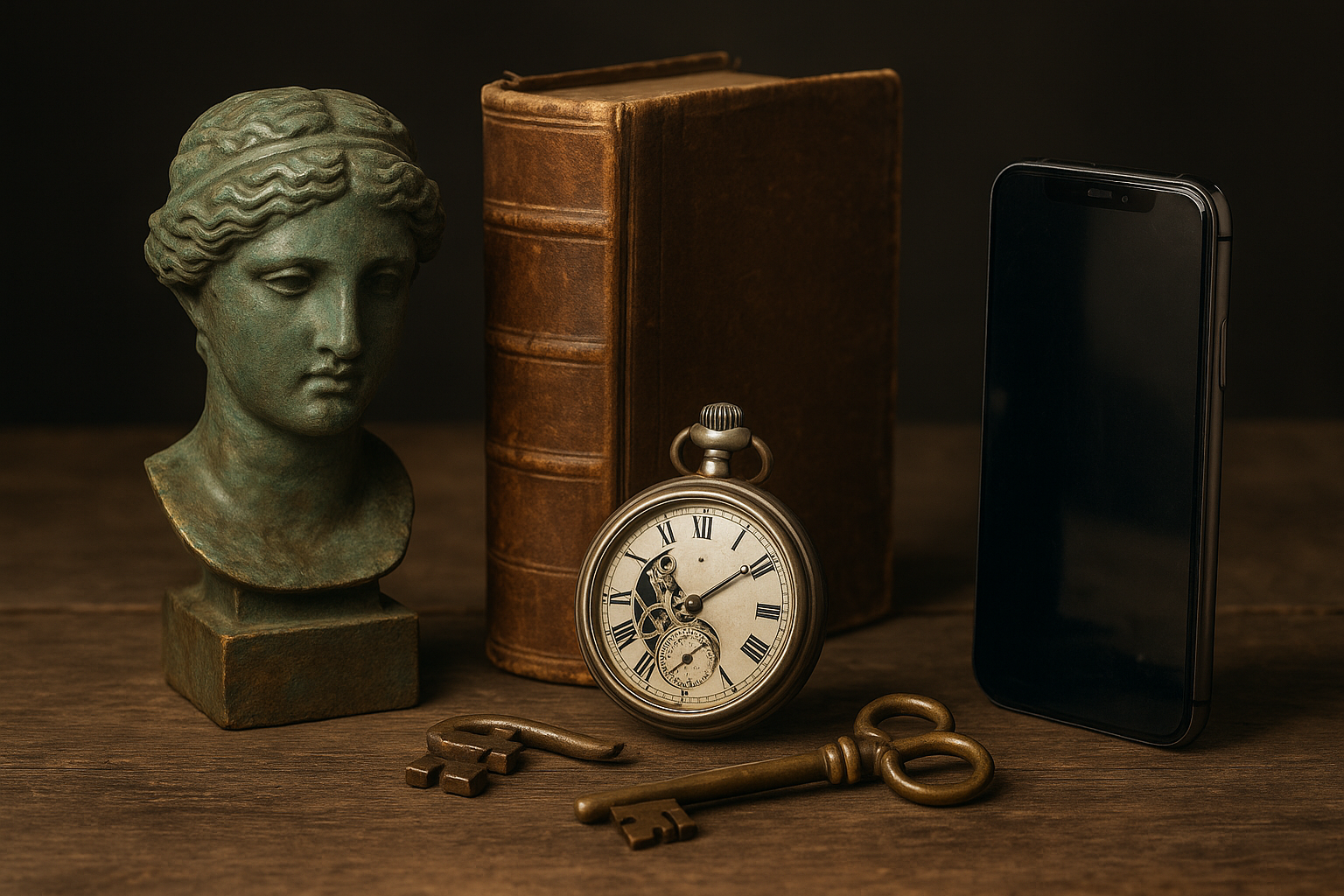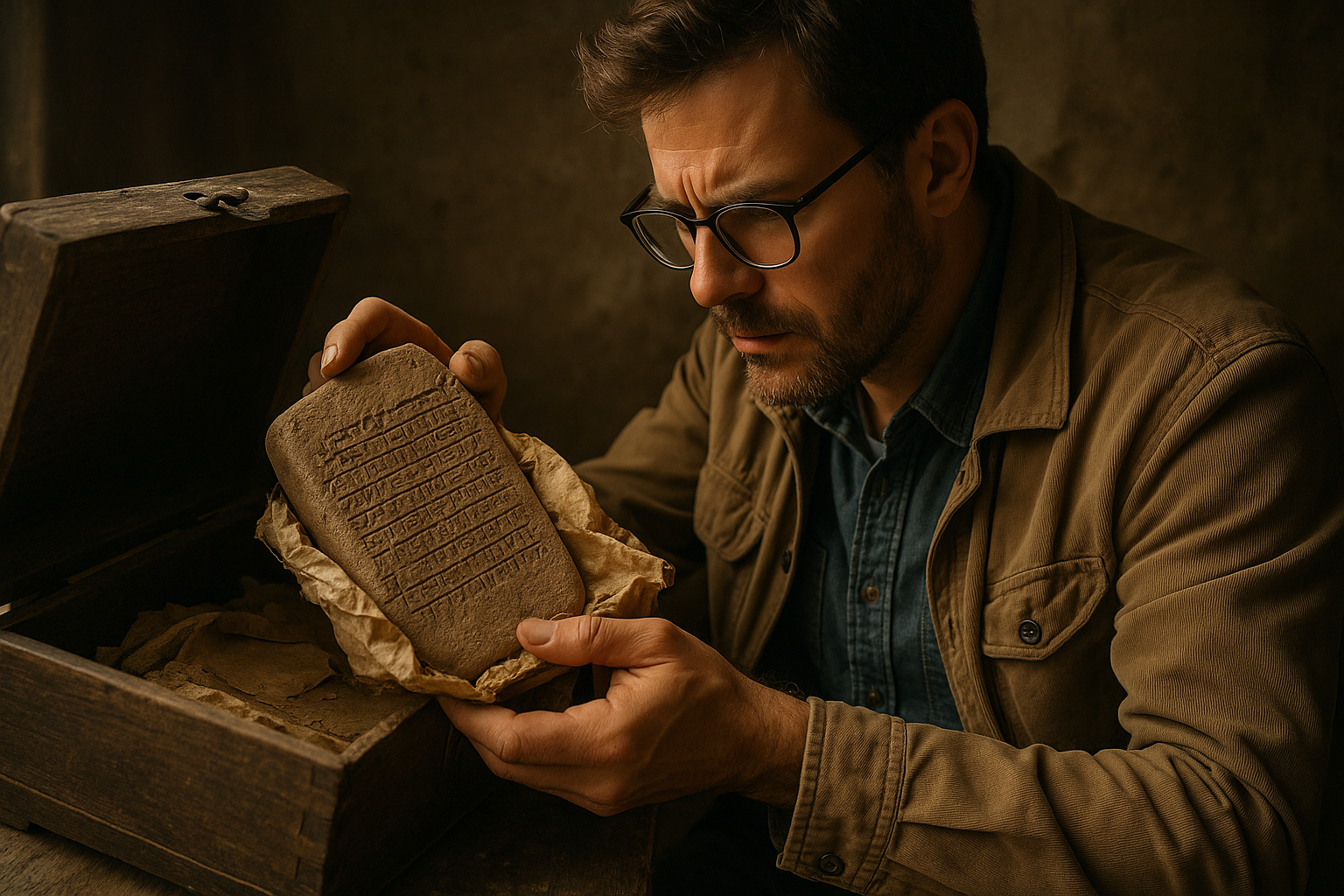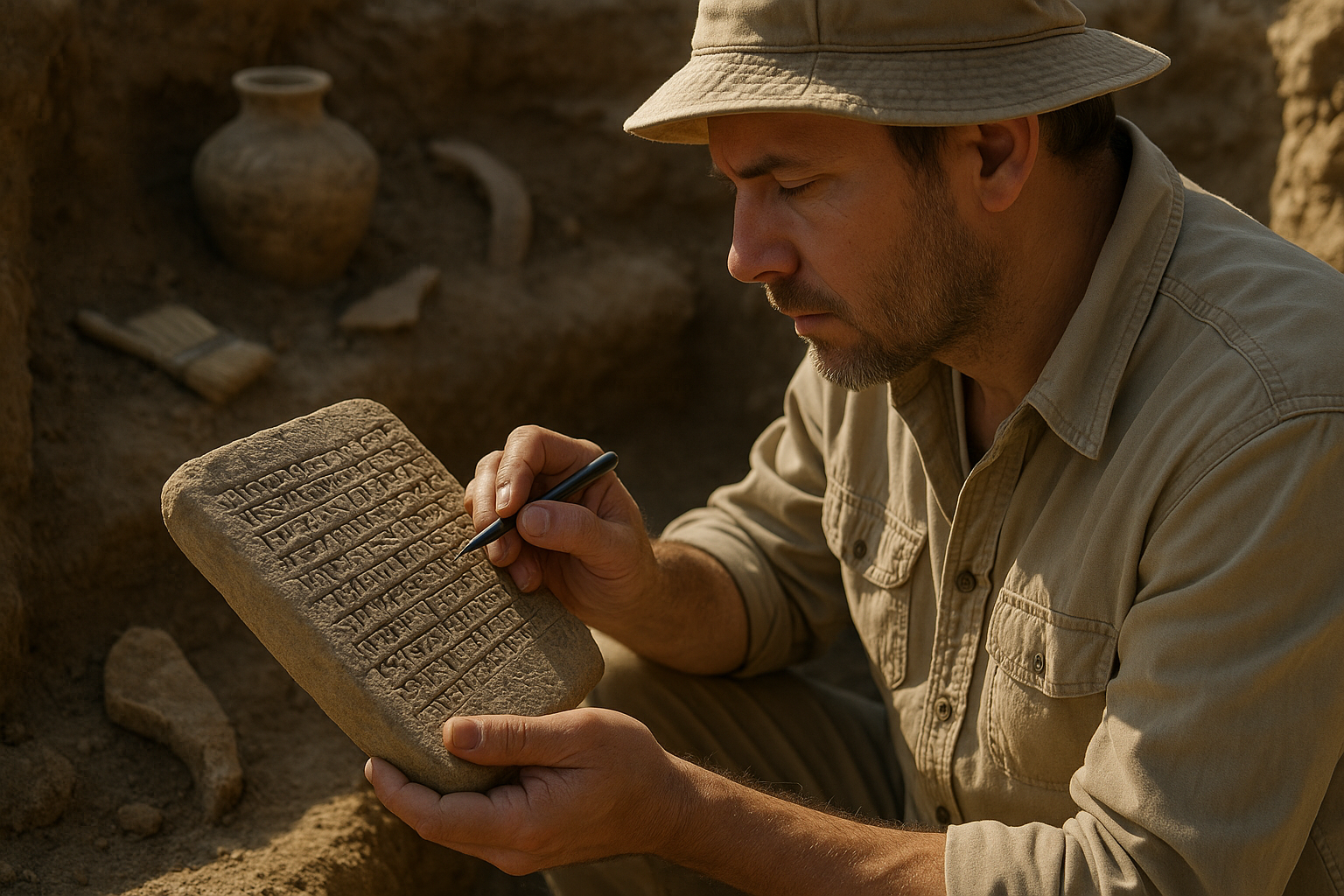The artifacts we uncover from ancient civilizations hold secrets waiting to be deciphered, revealing stories of human ambition, cultural evolution, and technological advancement across millennia.
🔍 The Enigmatic Language of Ancient Objects
Throughout history, humanity has left behind countless artifacts that serve as tangible connections to our past. These objects, ranging from intricate jewelry to massive architectural structures, carry within them what researchers call “temporal intent”—the embedded purposes, meanings, and messages that their creators intended to preserve for future generations. Understanding these encoded artifacts requires more than simple observation; it demands a multidisciplinary approach that combines archaeology, anthropology, linguistics, and cutting-edge technology.
The concept of temporal intent suggests that ancient peoples deliberately created objects with layers of meaning, knowing or hoping that future generations would eventually decode their significance. This intentionality transforms ordinary artifacts into complex time capsules, each containing information about beliefs, practices, technological capabilities, and social structures of bygone eras.
Deciphering the Codes: Methods and Technologies
Modern archaeologists and researchers employ an impressive arsenal of tools to unlock the mysteries hidden within ancient artifacts. These methodologies have evolved dramatically over the past few decades, incorporating technologies that would have seemed like science fiction just a generation ago.
Advanced Imaging Techniques
Non-invasive imaging has revolutionized artifact analysis. Multispectral imaging reveals hidden inscriptions and artwork invisible to the naked eye, while CT scanning allows researchers to examine the internal structure of objects without damaging them. X-ray fluorescence spectroscopy identifies the elemental composition of materials, providing clues about trade routes, manufacturing techniques, and cultural exchanges.
These technologies have unveiled countless surprises. Palimpsests—manuscripts where text has been scraped off and overwritten—now reveal their original content through advanced imaging. Ancient sculptures show traces of vibrant pigments long faded, helping us understand that classical “white” marble statues were once painted in brilliant colors.
Chemical and Material Analysis
Understanding the physical composition of artifacts provides crucial context for their interpretation. Radiocarbon dating establishes timelines with increasing precision, while isotope analysis reveals information about ancient diets, migration patterns, and environmental conditions. DNA extraction from organic materials embedded in artifacts opens windows into the genetic makeup of ancient populations and their relationships with contemporary groups.
⏳ Reading the Intent: Cultural Context and Symbolic Systems
Temporal intent cannot be understood through technical analysis alone. The cultural, religious, and social contexts that produced these artifacts are equally essential to decoding their meanings. Symbols that seem arbitrary to modern eyes often carried profound significance within their original cultural frameworks.
Religious and Ceremonial Artifacts
Many ancient objects served religious or ceremonial purposes, encoding spiritual beliefs and cosmological understanding. The intricate iconography found on Mayan stelae, Egyptian tomb paintings, and Mesopotamian cylinder seals represents sophisticated theological concepts expressed through visual language. These artifacts were created with the explicit intent of communicating with both contemporary audiences and, in many cases, divine beings or future generations.
The Rosetta Stone stands as perhaps the most famous example of successfully decoded temporal intent. This granodiorite stele, inscribed with the same text in three different scripts, provided the key to understanding Egyptian hieroglyphics after centuries of mystery. Its creation represented a deliberate multilingual communication strategy, intended to ensure the decree it contained would be understood across different linguistic communities within Ptolemaic Egypt.
Everyday Objects as Historical Documents
Not all significant artifacts are grand monuments or ceremonial objects. Everyday items—pottery shards, tools, personal ornaments—carry their own forms of temporal intent. The evolution of pottery styles reveals trade networks and cultural diffusion. Tool marks show technological development and craftsmanship traditions. Even refuse heaps provide invaluable information about daily life, diet, and resource management.
🗿 Case Studies: Remarkable Decoded Artifacts
Examining specific examples illuminates the process and significance of decoding ancient artifacts. These case studies demonstrate how patient research, technological innovation, and interdisciplinary collaboration gradually reveal the secrets embedded in objects from the past.
The Antikythera Mechanism
Discovered in a shipwreck off the Greek island of Antikythera in 1901, this corroded bronze device baffled researchers for decades. Advanced imaging and computational modeling eventually revealed it to be an extraordinarily sophisticated astronomical calculator from approximately 100 BCE. The mechanism predicted celestial events, tracked the Olympic Games cycle, and demonstrated a level of mechanical complexity not seen again for over a millennium.
The temporal intent behind the Antikythera Mechanism was clearly scientific and educational—to encode astronomical knowledge in a portable, mechanical form. Its discovery fundamentally changed our understanding of ancient Greek technological capabilities and scientific sophistication.
Cuneiform Tablets and Administrative Records
The tens of thousands of cuneiform tablets discovered throughout Mesopotamia represent one of humanity’s earliest systems of writing. While many contain administrative records—inventories, contracts, receipts—their temporal intent extends beyond mere bookkeeping. These tablets preserve the earliest recorded laws, literary works, mathematical treatises, and astronomical observations.
The Epic of Gilgamesh, preserved on cuneiform tablets, demonstrates how ancient peoples intentionally encoded their cultural narratives for preservation. This epic poem explores timeless themes of mortality, friendship, and the human condition, suggesting its creators understood they were creating something meant to transcend their immediate time and place.
The Challenge of Interpretation and Bias
Decoding temporal intent is fraught with interpretive challenges. Modern researchers inevitably approach ancient artifacts through contemporary cultural lenses, risking misinterpretation or projection of modern concepts onto ancient societies. This challenge requires constant critical self-examination and acknowledgment of interpretive limitations.
The Problem of Lost Context
Many artifacts survive without their original context—the circumstances of their creation, use, and deposition. An object removed from its archaeological context loses much of its interpretive value. Looting and unscientific excavation have destroyed irreplaceable contextual information, making the temporal intent of countless artifacts impossible to fully decode.
Evolving Interpretations
Our understanding of artifacts changes as new evidence emerges and interpretive frameworks evolve. Objects once explained through purely religious interpretations might later reveal economic or political dimensions. Gender biases have historically led researchers to misidentify objects or misunderstand their functions. Contemporary archaeology increasingly recognizes these limitations and strives for more nuanced, culturally sensitive interpretations.
🌍 Digital Technologies and Virtual Archaeology
The digital revolution has transformed how researchers study, preserve, and share knowledge about ancient artifacts. Three-dimensional scanning creates permanent digital records of objects, protecting against future damage or loss. Virtual reality allows researchers and the public to experience archaeological sites and artifacts in immersive ways impossible with traditional museum displays.
Artificial Intelligence and Pattern Recognition
Machine learning algorithms now assist in decoding ancient scripts, identifying patterns in vast datasets of artifacts, and even predicting likely locations of undiscovered archaeological sites. AI has successfully identified new Nazca Lines geoglyphs in Peru and helped decipher damaged or fragmentary texts by recognizing patterns and suggesting likely reconstructions.
These technologies accelerate research that once required lifetimes of painstaking manual work. However, they also raise questions about interpretation authority and the role of human judgment in understanding temporal intent. The most effective approaches combine computational power with human expertise and cultural understanding.
Preserving Temporal Intent for Future Generations
Just as we work to decode the temporal intent of ancient artifacts, contemporary society faces questions about what we should preserve for future generations and how to encode our own messages to the future. Nuclear waste repositories, designed to remain secure for tens of thousands of years, must somehow communicate danger to people who may speak entirely different languages and possess radically different cultural frameworks.
The Long Now Foundation and Future Communication
Organizations like the Long Now Foundation explicitly address the challenge of long-term temporal intent. Their 10,000 Year Clock project aims to encourage long-term thinking by creating a timepiece designed to function for millennia. This effort mirrors the intentions of ancient builders who created monuments meant to endure across vast stretches of time.
🔬 Interdisciplinary Collaboration: The Key to Understanding
Successfully decoding temporal intent requires expertise from multiple disciplines working in concert. Archaeologists provide excavation expertise and contextual knowledge. Materials scientists analyze composition and manufacturing techniques. Linguists decipher inscriptions and textual references. Anthropologists contribute cultural and comparative perspectives. Computer scientists develop tools for data analysis and visualization.
This collaborative approach has produced breakthrough insights impossible within single disciplines. The decipherment of Linear B, an ancient script used in Mycenaean Greece, required combining archaeological context, linguistic analysis, and insights from comparative studies of related writing systems. Michael Ventris, the architect who ultimately cracked the code, succeeded by bringing fresh perspectives from outside traditional classical scholarship.
Ethical Considerations in Artifact Study
The study of ancient artifacts raises profound ethical questions. Who has the right to study, possess, and interpret cultural heritage? How should remains and sacred objects be treated? What obligations do researchers have to descendant communities? These questions have no simple answers but demand serious consideration.
Repatriation and Cultural Ownership
Many museums hold artifacts acquired through colonialism, looting, or questionable circumstances. Increasingly, source countries and indigenous communities demand repatriation of cultural property. These debates involve competing claims about preservation, access, cultural ownership, and historical justice. Understanding temporal intent becomes more complete when descendant communities, who maintain living connections to ancient traditions, participate in interpretation.
📚 The Future of Temporal Intent Research
As technology advances and methodologies evolve, our capacity to decode ancient artifacts will only increase. Emerging techniques promise even greater insights into the past. Quantum sensing could detect minuscule traces of organic materials. Advanced genomics might extract genetic information from ever-smaller samples. Improved computational models could simulate ancient manufacturing processes or test hypotheses about artifact function.
Yet technology alone will never fully unlock the mysteries of temporal intent. Understanding requires empathy, imagination, and recognition that ancient peoples were as complex, thoughtful, and intentional as we are today. The most profound insights come from combining technical analysis with humanistic understanding—recognizing the artifacts we study as products of human minds grappling with questions that still concern us: meaning, legacy, connection across time.

Learning from the Past, Encoding for the Future
The study of temporal intent in ancient artifacts ultimately holds a mirror to our own time. What are we creating today that might puzzle or enlighten people thousands of years hence? How can we encode our knowledge, values, and warnings in forms that will endure and remain comprehensible across unimaginable spans of time?
Ancient artifacts remind us that human creativity, ingenuity, and the desire to communicate across time are constants throughout our history. Every decoded inscription, every analyzed tool, every interpreted symbol brings us closer to understanding not just specific ancient cultures but the broader human experience. These objects connect us to people separated by millennia, revealing that despite vast differences in technology, beliefs, and circumstances, fundamental human concerns remain remarkably consistent.
The mysteries encoded in ancient artifacts continue to captivate researchers and the public alike. Each discovery reshapes our understanding of history and human capability. As we develop ever more sophisticated tools for analysis and interpretation, we move closer to fully grasping the temporal intent behind these remarkable objects. Yet mystery will always remain—and perhaps that enduring enigma is itself part of the intent, ensuring that future generations continue to engage with, question, and learn from the material legacy of the past. 🔐
Toni Santos is a temporal researcher and symbolic archaeologist specializing in the study of forgotten burial systems, sacred archival practices, and the visual languages embedded in ancient temporal lore. Through an interdisciplinary and artifact-focused lens, Toni investigates how humanity has encoded knowledge, memory, and mystery into the temporal world — across cultures, rituals, and vanished civilizations. His work is grounded in a fascination with time capsules not only as vessels, but as carriers of hidden meaning. From extinct burial ritual practices to mythical codices and secret temporal seals, Toni uncovers the visual and symbolic tools through which cultures preserved their relationship with the temporal unknown. With a background in design semiotics and temporal artifact history, Toni blends visual analysis with archival research to reveal how time capsules were used to shape identity, transmit memory, and encode sacred knowledge. As the creative mind behind eltonxy, Toni curates illustrated chronologies, speculative temporal studies, and symbolic interpretations that revive the deep cultural ties between artifacts, ritual markings, and forgotten messages. His work is a tribute to: The lost temporal wisdom of Forgotten Time Capsule Burial Rituals The guarded archives of Sacred Codices and Forgotten Temporal Archives The mythopoetic presence of Temporal Symbols and Ritual Markings The layered visual language of Vanished Artifacts and Temporal Messages Whether you're a temporal historian, symbolic researcher, or curious gatherer of forgotten chronological wisdom, Toni invites you to explore the hidden roots of time capsule knowledge — one seal, one glyph, one message at a time.




